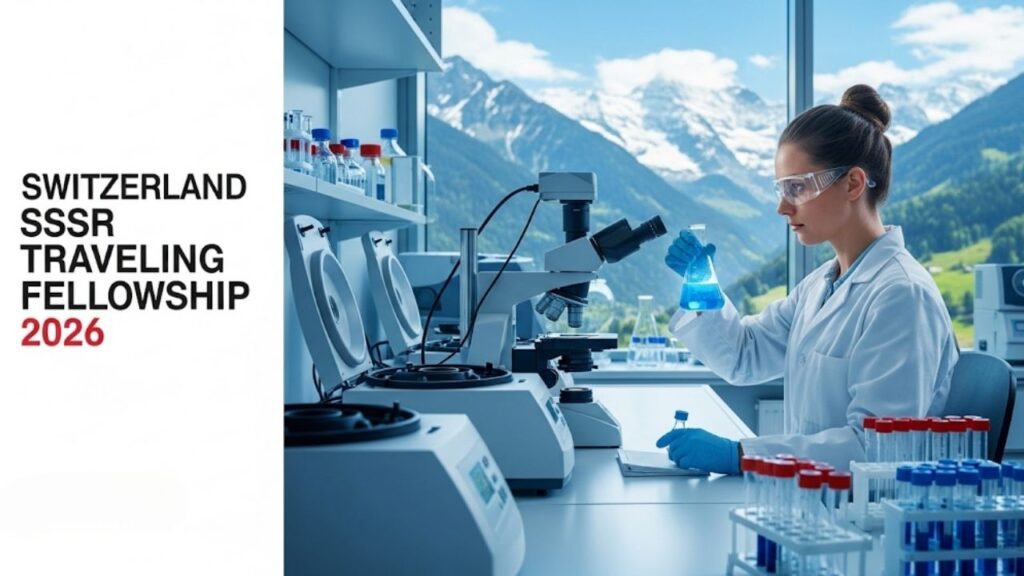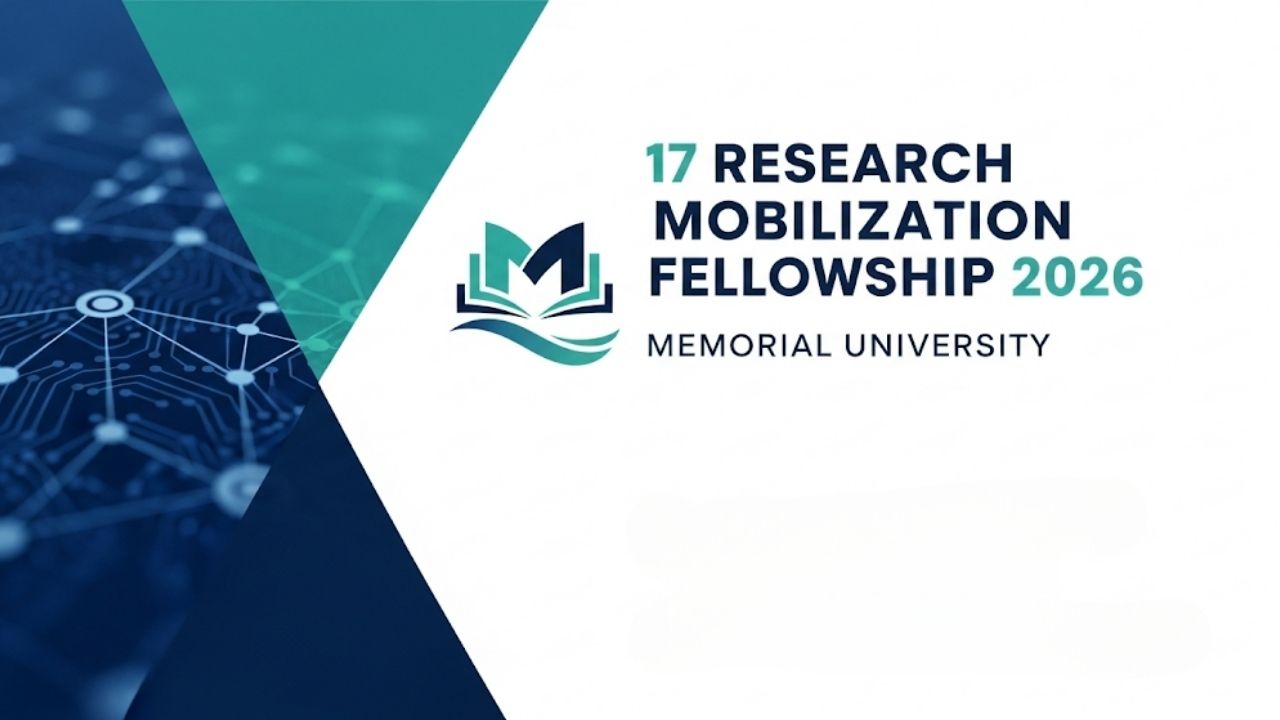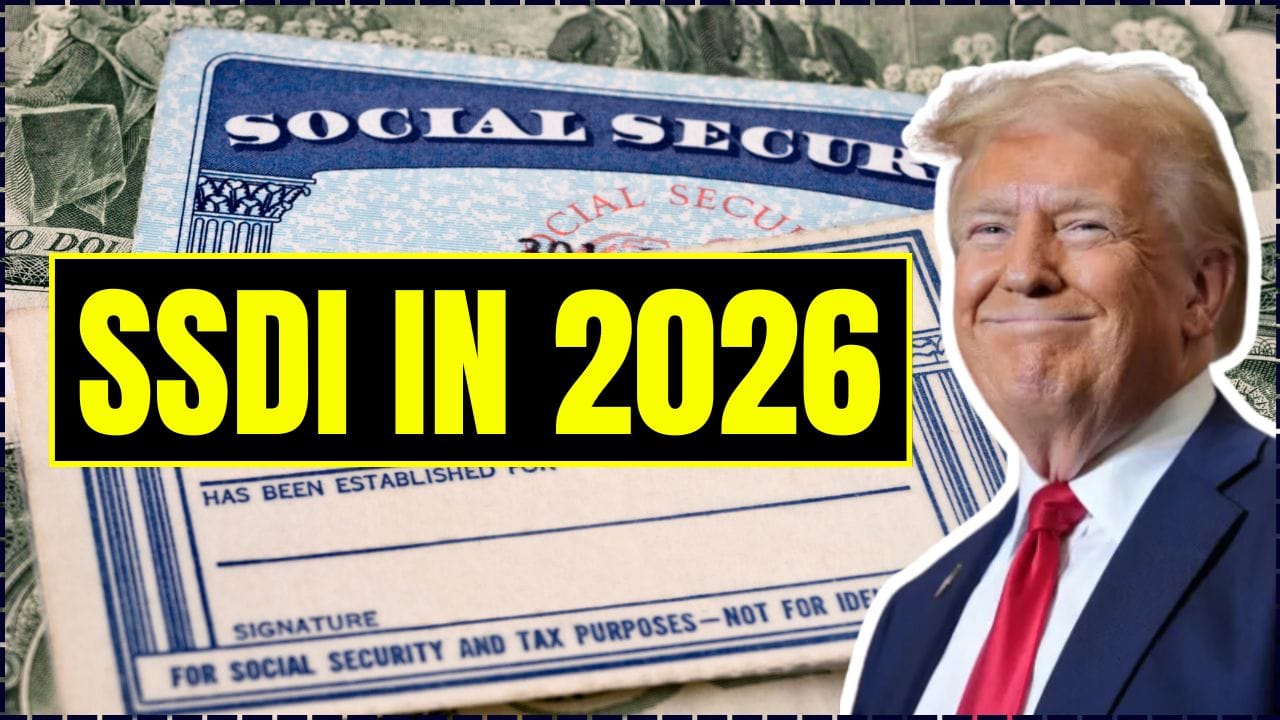Dreaming of advancing your research in the heart of Europe? The Switzerland SSSR Travelling Fellowship 2026 is a prestigious opportunity designed to empower the next generation of scientists in sleep research, sleep medicine, and chronobiology. This comprehensive guide breaks down everything you need to know—from eligibility to application strategy—to help you secure this career-defining fellowship. We’ll walk you through each step, making the process clear and achievable.

Switzerland SSSR Travelling Fellowship 2026
| Key Aspect | Detail |
| Purpose | To support short-term scientific visits to other labs for learning new techniques. SSSR Official Website |
| Target Audience | Early-career researchers (PhD students, MD students, Postdocs). SSSR Fellowship Guidelines |
| Award Amount | Up to CHF 2’500 to cover travel and accommodation. |
| Crucial Requirement | Applicants must be active members of the SSSR. |
The Switzerland SSSR Travelling Fellowship 2026 is a competitive but incredibly rewarding opportunity. By carefully preparing your documents, clearly articulating your scientific goals, and showing your passion for sleep science, you can put forward a powerful application. This fellowship could be the key that unlocks the next stage of your scientific career. Start planning today, and take a bold step toward becoming a leader in your field.
What Exactly Is the SSSR Travelling Fellowship?
The SSSR Travelling Fellowship isn’t just a grant; it’s a launchpad. Offered by the Swiss Society for Sleep Research, Sleep Medicine and Chronobiology (SSSR), this award is specifically designed to help young scientists expand their horizons. It provides the financial backing needed to visit a host laboratory, either within Switzerland or abroad, to learn a new methodology, technique, or theoretical framework that isn’t available at their home institution.
Think of it as a focused, high-impact research exchange. You get to immerse yourself in a new environment, collaborate with leading experts, and bring valuable new skills back to your own lab. This not only enhances your current project but also builds your professional network and makes your CV shine. The SSSR is a cornerstone of the Swiss scientific community, dedicated to promoting top-tier research and fostering collaboration among its members. This fellowship is a direct reflection of that mission.
Are You the Ideal Candidate? Unpacking the Eligibility Criteria
Before you start drafting your application, it’s essential to confirm that you fit the profile the SSSR is looking for. The criteria are quite specific, so let’s break them down.

Your Career Stage
This is an early-career researcher grant. The fellowship is exclusively for:
- PhD or MD students currently enrolled in a doctoral program.
- Postdoctoral researchers who are in the early stages of their post-PhD career.
If you are a senior researcher or a principal investigator, this particular fellowship is not for you. The goal is to invest in those who are still building their scientific foundation.
The Membership Mandate
This is a non-negotiable point: you must be a member of the SSSR to apply. If you’re not already a member, don’t worry. The process is straightforward, but you should apply for membership well in advance of the fellowship deadline. You can typically find membership application details on the official SSSR website. This requirement ensures the society is investing in researchers who are committed to the Swiss sleep science community.
Your Research Focus
Your proposed project and the skills you intend to learn must fall squarely within the domains of sleep research, sleep medicine, or chronobiology. Your application needs to clearly articulate how your visit to the host lab will contribute to one of these fields. Be specific about the technique you’ll learn—whether it’s a new type of data analysis, a specific experimental procedure, or a clinical assessment method.
Your Step-by-Step Application Guide for the Switzerland SSSR Travelling Fellowship 2026
A successful application is a well-prepared one. The SSSR requires a concise but comprehensive package that tells a compelling story about you, your research, and your ambitions. In my experience advising young researchers, a common oversight is underestimating the importance of the motivation letter; it’s your chance to tell the story behind your CV.
Step 1: Craft Your Project Abstract
This is a brief summary (usually around 250-300 words) of your proposed visit. It should clearly state your research question, the specific technique you will learn, the chosen host institution and supervisor, and the expected impact on your research project. Be clear, concise, and scientific.
Step 2: Write a Compelling Motivation Letter
This is where you make your case. Your motivation letter (typically one page) should connect the dots for the review committee. Address these key points:
- Why this lab? Explain why the specific host laboratory and supervisor are the perfect fit for your training goals.
- Why this technique? Describe the new skill you will acquire and why it is crucial for your current research and future career.
- What’s the impact? Articulate how this fellowship will benefit your project, your home institution, and your long-term career trajectory.
- Show your passion! Let your enthusiasm for your field shine through.
Step 3: Prepare Your Curriculum Vitae (CV)
Your CV should be up-to-date and tailored to the fellowship. Highlight your relevant research experience, publications, conference presentations, and any awards you have received. Keep it clean, professional, and easy to read (a two-page maximum is a good rule of thumb).
Step 4: Secure Your Letter of Support
You will need a letter of support from your current supervisor (at your home institution). This letter should endorse your application, confirm the importance of the proposed training for your project, and express confidence in your abilities as a researcher. Give your supervisor ample notice to write a thoughtful and detailed letter.
Step 5: Get Confirmation from the Host Lab
You must also provide a letter or email of confirmation from the supervisor of the host laboratory. This confirms that they have agreed to host you for the proposed dates and will provide the necessary training and resources. This shows the committee that your plan is concrete and feasible.
Step 6: Assemble and Submit Your Application Package
Once you have all the documents—abstract, motivation letter, CV, and both support letters—combine them into a single PDF file as instructed by the SSSR. Pay close attention to the submission deadline, which is typically announced on their website. Double-check all requirements before hitting “submit.”
Pro Tips for a Standout Application
Meeting the requirements is one thing; standing out is another. Here are a few insider tips to elevate your application from good to great.

Align Your Goals with the SSSR’s Mission
Read the SSSR’s mission statement. Understand what they value—collaboration, innovation, and supporting the next generation. Frame your application to show how your proposed project aligns with these values. Explicitly state how the skills you gain will be shared with your colleagues, thereby strengthening the broader research community.
Showcase the Impact of Your Travel
Don’t just say what you will learn; explain the return on investment for the SSSR. How will this CHF 2’500 grant translate into tangible scientific progress? For example: “Learning this advanced optical imaging technique will allow me to answer a key question in my PhD thesis that is currently unanswerable in my home lab, potentially leading to a high-impact publication.”
The SSSR often shares news and updates through academic channels and social media. Here’s an example of the kind of announcement you might see from a major institution.
Proofread, Proofread, Proofread!
A single typo can signal carelessness. Your application is a reflection of your quality as a scientist. Read every document aloud, use a grammar checker, and—most importantly—ask a colleague or mentor to review your entire package before you submit it. A fresh pair of eyes can catch mistakes you’ve overlooked.
Life After the Fellowship: What to Expect
If you are awarded the fellowship, congratulations! You’ll be expected to use the funds for the specific visit you proposed. Afterward, the SSSR will require a short report summarizing your experience and the outcomes of your visit. This is a fantastic opportunity to reflect on what you’ve learned and to formally thank the society for their support.
Your Ultimate Guide to Winning the CARTA PhD Fellowships 2026
Your Ultimate Guide to American University of Sharjah Fellowships 2026 Open for Applications
FAQs
Q1:Can international researchers apply for the SSSR fellowship?
Yes, international researchers can apply, but the key condition is that you must be an active member of the SSSR and typically should be conducting your research at a Swiss institution. Always check the latest guidelines on the official website for specifics on residency or institutional affiliation.
Q2:What is the typical deadline for the fellowship?
The deadline can vary each year. Historically, it is often in the autumn. For the 2026 cycle, you should start checking the SSSR’s official website around mid-2025 for the official announcement and exact date.
Q3:Do I need to have publications to be a strong candidate?
While a strong publication record is always a plus for an early-career researcher, it is not always the deciding factor. The committee places a heavy emphasis on the quality and feasibility of your proposed project and the clarity of your motivation. A brilliant proposal can be just as compelling as a long list of publications.










